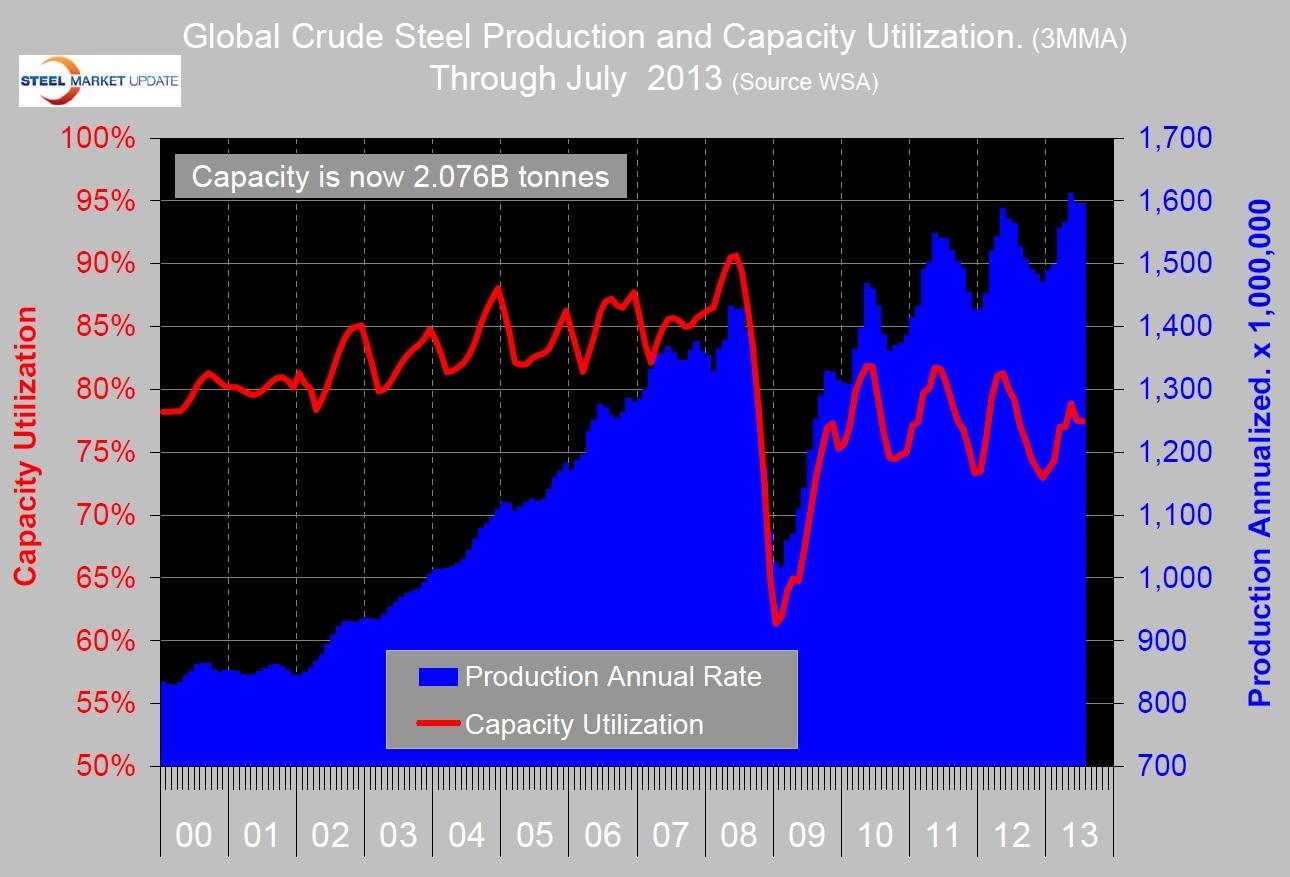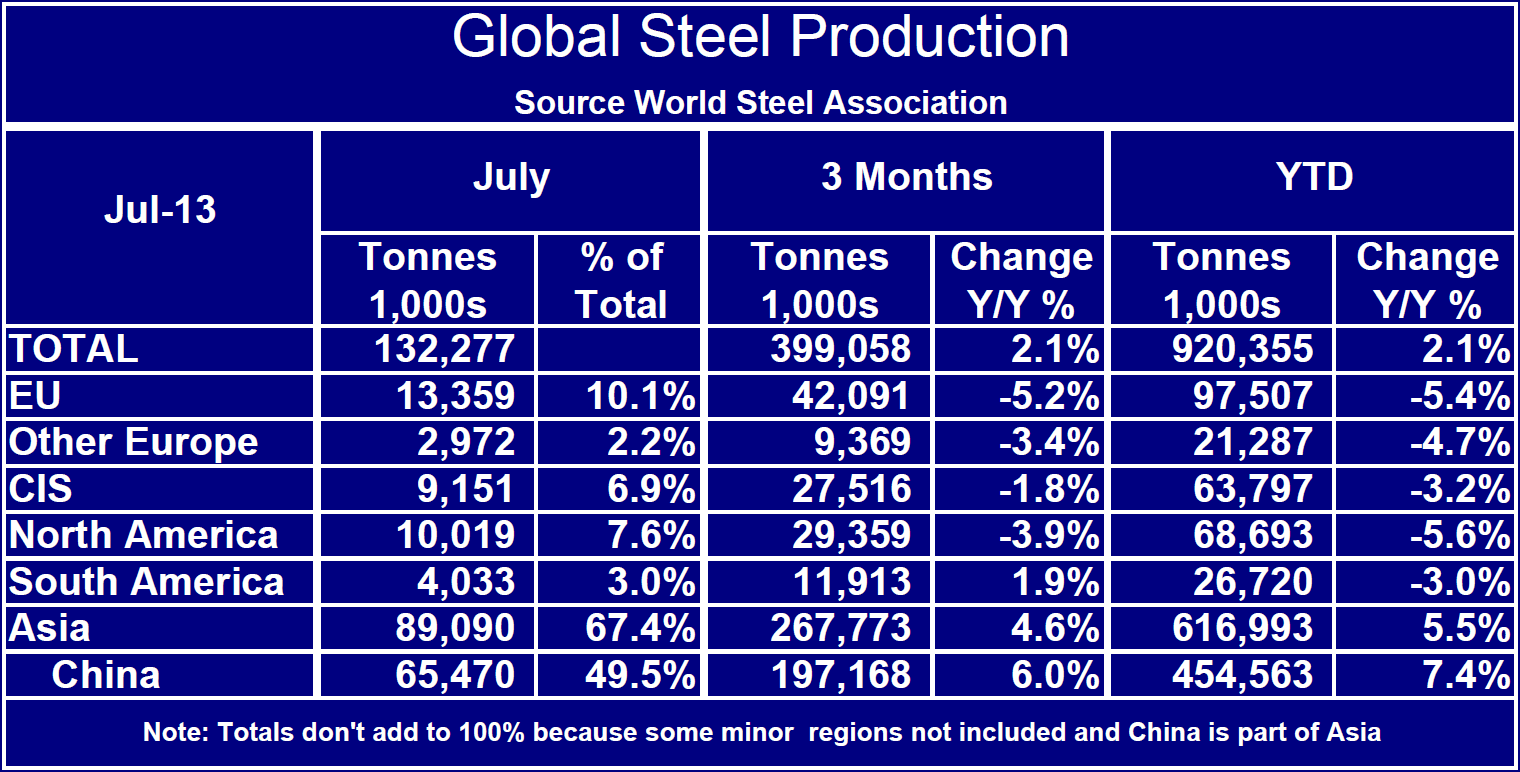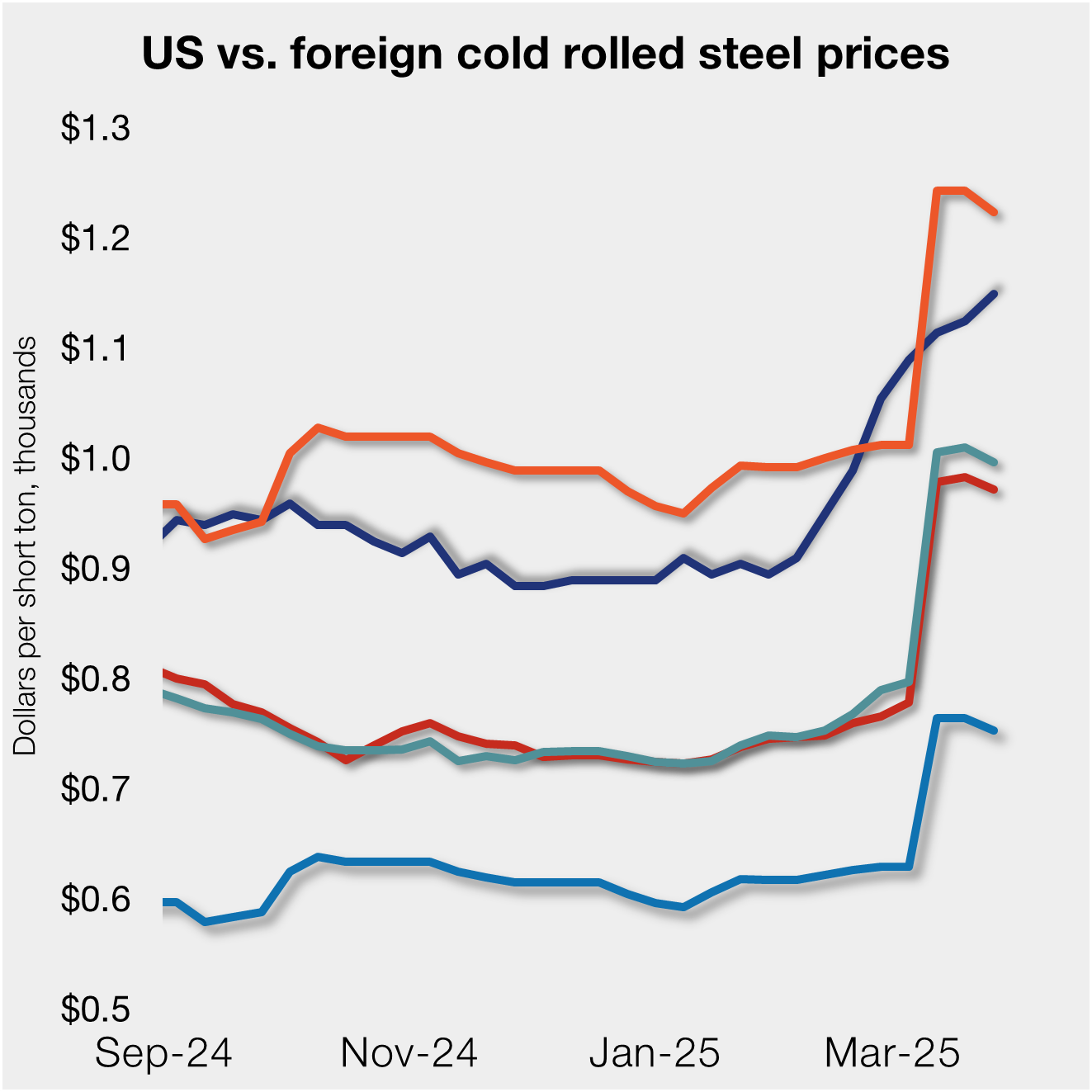Steel Products

Global Steel Production in July 2013
Written by Peter Wright
August 20, 2013
The three month moving average of global production in July was unchanged from June at an annual rate of 1.596 billion tons. Capacity utilization was 77.5 percent (Figure 1). For the July data, the World Steel Association increased the global capacity to 2.06 billion tons which reduced the capacity utilization value back to Q3 last year. Year to date global production through July was up by 2.1 percent from 2012. All regions declined except Asia which increased by 5.5 percent. All the reporting nations in Asia increased except South Korea which was down by 5.3 percent. China was up by 7.4 percent (Table 1). This is a continuation of recent trends with no surprises. China now accounts for 49.4 percent of global steel production which intuitively seems unsustainable.

George Friedman of Stratfor wrote about the unsustainability of Chan’s economic growth on July 23rd and had this to say:
The New York Times, Barons and Goldman Sachs are all both a seismograph of the conventional wisdom and the creators of the conventional wisdom. Therefore, when all three announce within a few weeks that China’s economic condition ranges from disappointing to verging on a crash, it transforms the way people think of China. Now the conversation is moving from forecasts of how quickly China will overtake the United States to considerations of what the consequences of a Chinese crash would be.
For China’s economic growth to continue at the past level, China had to maintain its wage differential indefinitely. But China had another essential policy: Beijing was terrified of unemployment and the social consequences that flow from it. This was a rational fear, but one that contradicted China’s main strength, its wage advantage. Because the Chinese feared unemployment, Chinese policy, manifested in bank lending policies, stressed preventing unemployment by keeping businesses going even when they were inefficient, (Excess steel capacity). China also used bank lending to build massive infrastructure and commercial and residential property. Over time, this policy created huge inefficiencies in the Chinese economy. Without recessions, inefficiencies compound and will eventually drag down the economy.
The obvious economic impact on the rest of the world will fall on the producers of industrial commodities such as iron ore. The extravagant expectations for Chinese growth will not be met, and therefore expectations for commodity prices won’t be met. Since the Chinese economic failure has been underway for quite awhile, the degradation in prices has already happened. Australia in particular has been badly hit by the Chinese situation, just as it was by the Japanese situation a generation ago.
The SMU perspective on this is that we inescapably live in a global economy and the US steel industry is at the mercy of those nations that manipulate their currency and support excess and/or inefficient production. This is why we track and report trade and currency values continuously to enable our subscribers to be proactive in managing their businesses.

Peter Wright
Read more from Peter WrightLatest in Steel Products

Nucor keeps HRC price unchanged
Nucor paused its weekly hot-rolled (HR) coil price this week, keeping it flat for the first time since Jan. 21. This comes after a nine-week rally that saw the company increase prices by double-digits for eight of those weeks.

Nucor increases plate prices by $40/ton
Nucor aims to increase prices for steel plate by $40 per short ton (st) with the opening of its May order book. The Charlotte, N.C.-based steelmaker said the increase was effective with new orders received on Friday, March 28, in a letter to customers dated the same day. The company said the price hike applied […]

US CRC price gains ground over imports
US cold-rolled (CR) coil prices increased again this week, while offshore prices declined.

SMU Steel Demand Index momentum slows
Steel Market Update is pleased to share this Premium content with Executive members. Contact info@steelmarketupdate.com for information on how to upgrade to a Premium-level subscription. Growth in SMU’s Steel Demand Index eased in March after reaching a four-year high in late February. Despite a moderate gain, the index remains in expansion territory. The Steel Demand […]

Leibowitz: Impact of tariffs on US manufacturers
On February 10, President Trump announced a massive restructuring of tariffs on steel and aluminum. Those changes took effect on March 12, and they will impact US manufacturing. What will the impact be? Bye-bye exclusions Perhaps the most important change, which hits imports from all countries, is the loss of a product exclusion process to […]
